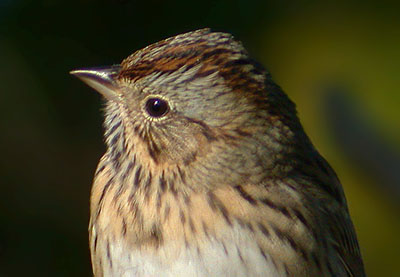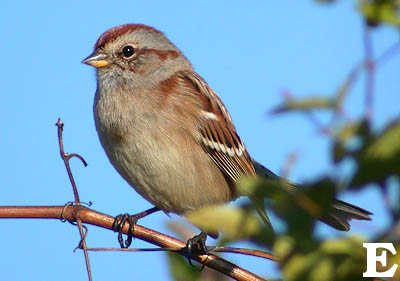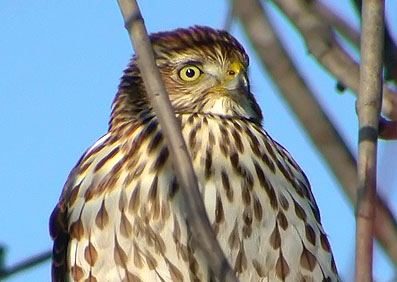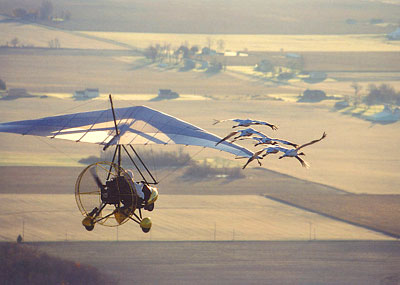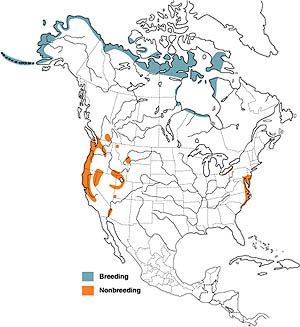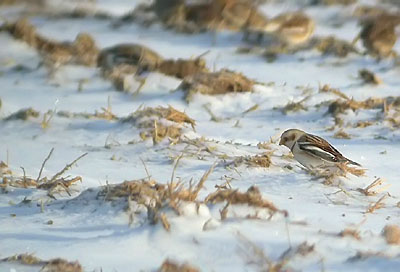
No. Not a good day for digiscoping...very poor lighting, but an excellent morning of birding! Large fluffy snowflakes are still coming down and the birds were very active along the stream corridor of Pheasant Branch Conservancy. As predicted, a
CAROLINA WREN belted out a fragment of its song just as I arrived, but was silent and out of sight the remainder of my hike.

The only cooperative bird for photography was this
MOURNING DOVE. I became more of a growing concern as I walked past it, but not enough for it to fly away.
The
TUFTED TITMOUSE population along the stream corridor is steadily growing each season. Today I observed over a dozen of them feeding in the upper-story...I’m pretty sure I saw a couple of them raiding a hornet’s nest. Their “
peter peter!” call could be heard up and down the corridor. Though I didn’t get a good picture of one today, I’ll have to return when the lighting is better.

Only a few open-water spots along the stream provide for the birds and they were utilizing them as best they could. I observed several
DARK-EYED JUNCOS taking turns hovering (with impressive agility!) above one such spot. They would take a quick dip, being careful not to be taken by the current, and then preened and ruffled their feathers in the snow.
 Other birds observed this morning:Great Horned Owl
Other birds observed this morning:Great Horned Owl
Downy Woodpecker
Hairy Woodpecker
Red-bellied Woodpecker
Northern Cardinal
American Robin
American Crow
Blue Jay
Black-capped Chickadee
White-breasted Nuthatch
Red-breasted Nuthatch
Brown Creeper
Song Sparrow
House Finch
American GoldfinchAll images © 2005 Michael McDowell

















